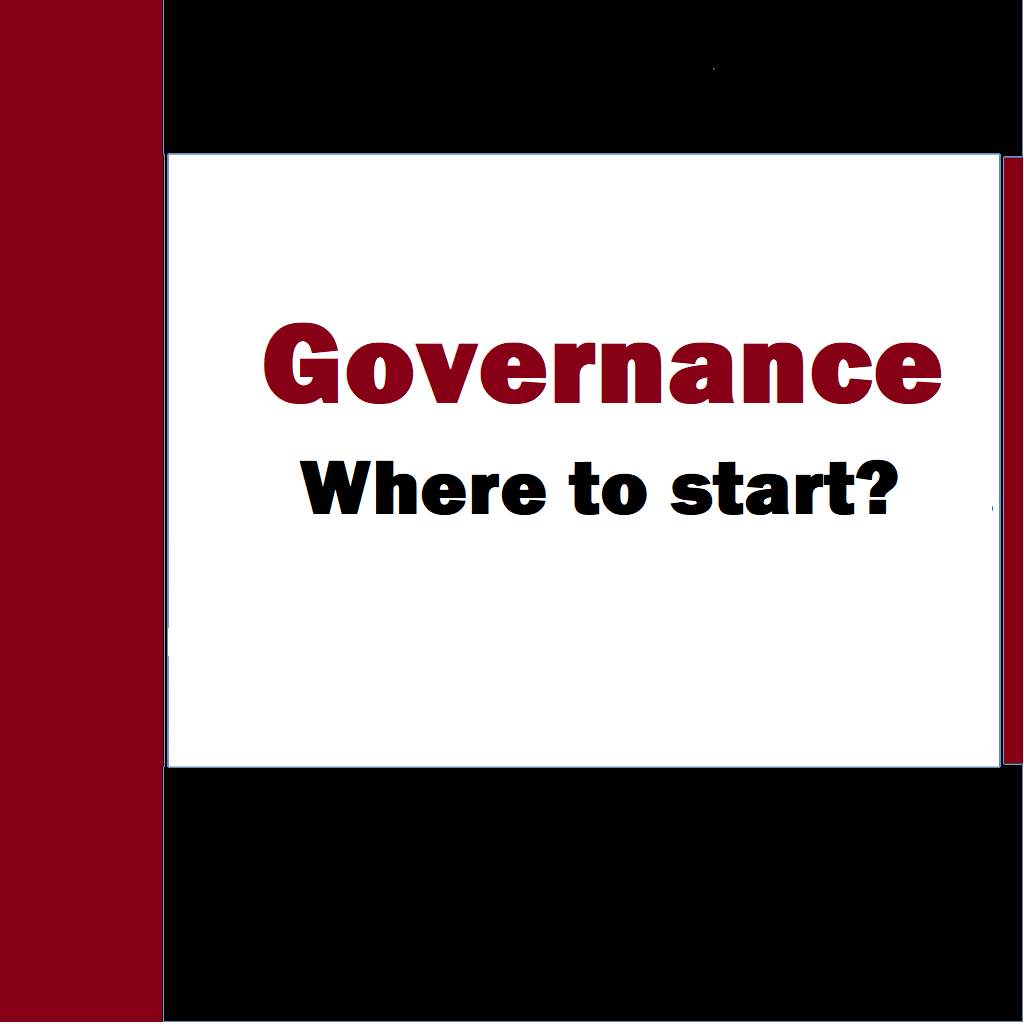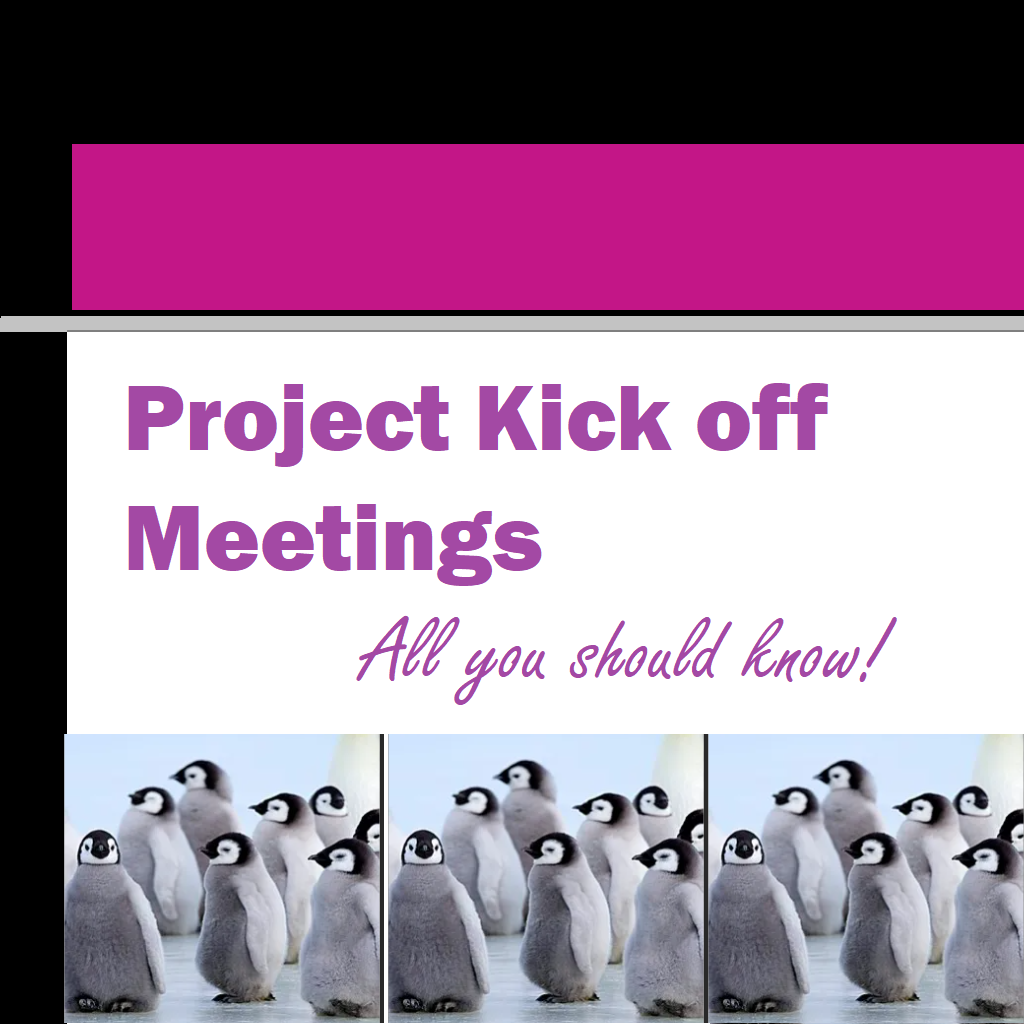This is one of the good old buzz word albeit a heavy one ‘Governance’. Governance plays a crucial role in ensuring the success and sustainability of organizations and projects. By establishing clear rules, processes, and structures, governance provides a framework that promotes transparency, accountability, and responsible decision-making.
It helps organizations achieve their objectives by effectively managing resources, mitigating risks, and maintaining compliance with legal and ethical standards. Good governance fosters a culture of trust and integrity, enabling stakeholders to have confidence in the organization’s operations. It promotes efficient and effective use of resources, minimizes conflicts, and facilitates collaboration among stakeholders. Ultimately, good governance enables organizations to adapt to changing circumstances, make informed decisions, and navigate challenges, thereby increasing their overall resilience and long-term viability. Governance refers to the overall system and framework of rules, policies, processes, and structures that guide and regulate the actions and behavior of individuals, groups, or organizations. It involves the establishment of mechanisms for decision-making, accountability, and control to ensure that activities are carried out in a responsible, ethical, and effective manner.
Governance can be applied to various contexts, such as government entities, businesses, nonprofit organizations, and even software projects. It provides a framework for managing resources, making decisions, resolving conflicts, and achieving objectives while upholding principles of transparency, fairness, and integrity.
CONTENT
Governance without authority
Governance without authority refers to a situation where a governing body or framework lacks the necessary power or control to enforce decisions or influence behavior. In such cases, governance may exist in theory, with established rules and processes, but lacks the means to ensure compliance or enforce its directives. While governance typically involves having authority to make decisions and enforce them, there can be instances where governance structures exist without the necessary authority. This can occur due to various reasons, such as a lack of resources, weak enforcement mechanisms, conflicting interests, or resistance from individuals or groups.
In situations where governance lacks authority, it becomes challenging to ensure adherence to established policies, guidelines, and processes. Decision-making may become fragmented, inconsistent, or subject to undue influence. Without the ability to enforce decisions, there may be a lack of accountability, transparency, and alignment with organizational objectives.
In order for governance to be effective, it is essential to have the appropriate authority to implement and enforce decisions. Authority provides the means to hold individuals or entities accountable, resolve conflicts, allocate resources, and ensure compliance with established rules. Without authority, governance can become a mere formality, lacking the ability to drive meaningful change or achieve desired outcomes.
Arrive at better governance
Deriving better governance involves implementing strategies and practices that enhance transparency, accountability, and effectiveness. Here are some steps you can take to improve governance:
- Clearly define objectives and values: Begin by clearly defining the organization’s objectives and values. This establishes a foundation for decision-making and helps align governance practices with the organization’s purpose.
- Review and revise governance structures: Assess the existing governance structures and processes. Identify areas of improvement, such as decision-making mechanisms, roles and responsibilities, and communication channels. Revise and update these structures to ensure they are effective and reflective of the organization’s needs.
- Enhance transparency and communication: Foster a culture of transparency by openly sharing information, decisions, and processes with stakeholders. Improve communication channels to ensure timely and accurate dissemination of information. Encourage feedback and engagement from stakeholders to create an inclusive governance environment.
- Strengthen accountability mechanisms: Implement mechanisms to hold individuals or entities accountable for their actions and decisions. Clearly define roles, responsibilities, and performance expectations. Develop systems for monitoring and evaluating performance, and establish consequences for non-compliance or misconduct.
- Foster ethical conduct and integrity: Promote ethical behavior by establishing a code of conduct and ethical guidelines. Provide training and awareness programs to ensure that individuals understand their ethical responsibilities. Encourage a culture of integrity and ethical decision-making throughout the organization.
- Enhance stakeholder engagement: Engage stakeholders at various levels of governance to ensure their voices are heard and their perspectives are considered. Establish mechanisms for effective consultation, feedback, and collaboration. Involve stakeholders in decision-making processes to increase their ownership and commitment.
- Establish risk management processes: Implement robust risk management processes to identify, assess, and mitigate risks. Integrate risk considerations into decision-making and governance processes. Regularly review and update risk management strategies to address emerging threats and uncertainties.
- Continuously evaluate and improve: Regularly assess the effectiveness of governance practices and make necessary adjustments. Seek feedback from stakeholders and incorporate their insights into governance improvements. Continuously monitor and measure governance performance against defined objectives and key performance indicators.
- Learn from best practices: Study and learn from successful governance models and practices in similar organizations or industries. Adopt and adapt relevant best practices to suit your organization’s specific context and needs.
- Seek external expertise if needed: Consider seeking external expertise, such as consultants or specialists, to provide objective insights and recommendations for improving governance. External perspectives can bring fresh ideas and help identify blind spots or areas for improvement.
Remember that improving governance is an ongoing process that requires commitment, collaboration, and continuous evaluation. It is essential to adapt and refine governance practices as the organization evolves and external factors change.
Therefore we can say that the key aspects of governance include:
- Decision-making: Governance establishes processes and structures for decision-making, including defining roles and responsibilities, specifying decision criteria, and ensuring the involvement of relevant stakeholders.
- Accountability: Governance ensures that individuals or entities are responsible for their actions and decisions. It establishes mechanisms to track performance, assess outcomes, and hold individuals or entities accountable for their responsibilities.
- Transparency: Governance promotes openness and transparency by providing access to information, decision-making processes, and relevant documentation. It allows stakeholders to understand how decisions are made and how resources are managed.
- Compliance: Governance ensures compliance with laws, regulations, policies, and ethical standards. It establishes mechanisms for monitoring and enforcing compliance and addresses any breaches or violations.
- Risk management: Governance includes processes for identifying, assessing, and managing risks. It establishes mechanisms for risk mitigation, contingency planning, and response to ensure that potential risks are appropriately addressed.
- Ethical considerations: Governance incorporates ethical principles and standards to guide behavior and decision-making. It promotes integrity, fairness, and ethical conduct in all aspects of the governed entity.
- Stakeholder engagement: Governance involves engaging relevant stakeholders and considering their perspectives and interests. It provides mechanisms for effective communication, consultation, and collaboration to ensure inclusivity and address diverse needs.
Governance provides a framework that supports effective and responsible decision-making, accountability, and management of resources. It helps ensure that organizations and projects operate in a manner that aligns with their objectives, values, and the expectations of stakeholders.
The Essentials
Going blank in front of the clients is not a good idea. So before going into a governance call with a client, it is important to ensure that you have adequately prepared. Here are some essential checkpoints to consider before the call:
- Understand the Purpose: Clarify the purpose of the governance call. Determine the specific topics, decisions, or issues to be addressed during the call. This will help you focus your preparation and ensure that you are ready to discuss the relevant matters.
- Review Relevant Documentation: Familiarize yourself with any relevant documentation, such as project plans, reports, contracts, or previous meeting minutes. This will provide you with the necessary context and background information to actively participate in the discussion.
- Identify Key Stakeholders: Identify the key stakeholders who will be participating in the governance call. Understand their roles, interests, and concerns. This will help you anticipate their perspectives and be prepared to address their specific needs during the call.
- Set Clear Objectives: Determine what outcomes or decisions you aim to achieve during the governance call. Establish clear objectives that align with the purpose of the call. This will help you structure your discussion points and ensure that the call remains focused and productive.
- Prepare an Agenda: Create an agenda that outlines the topics, questions, and discussion points to be covered during the call. Share the agenda with the client in advance to ensure alignment and to give them an opportunity to provide input or suggest additional topics.
- Anticipate Potential Challenges: Consider potential challenges, risks, or conflicts that may arise during the call. Think about strategies to address them effectively. Anticipating these challenges will help you prepare concise and thoughtful responses to ensure smooth progress during the call.
- Gather Relevant Data and Metrics: Collect any relevant data, metrics, or performance indicators that may be needed to support your points or to provide updates on the project’s progress. Having accurate and up-to-date information will enhance the credibility of your discussion and enable informed decision-making.
- Practice Active Listening: Develop active listening skills to ensure that you fully understand the client’s perspectives and concerns. Take notes during the call to capture important points, decisions, or action items. This will enable you to respond appropriately and follow up effectively after the call.
- Consider Potential Solutions: Think about potential solutions or recommendations to address any anticipated challenges or issues. Prepare alternative approaches or options that can be discussed during the call to facilitate decision-making and problem-solving.
- Confirm Logistics and Technology: Double-check the logistics and technology requirements for the call, such as the date, time, duration, and preferred communication platform. Ensure that you have a stable internet connection, a quiet environment, and any necessary presentation materials or visuals ready.
Again it would be an understatement if I said that governance call goes without SME’s. So, identifying subject matter experts (SMEs), key stakeholders, and sign-off agents before a governance call with the client is crucial. Here’s why each of these elements is important:
- SMEs (Subject Matter Experts): SMEs possess specialized knowledge or expertise in specific areas relevant to the project or the governance call. Identifying SMEs allows you to involve the right individuals who can provide valuable insights and contribute to informed decision-making during the call.
- Key Stakeholders: Key stakeholders are individuals or groups who have a vested interest in the project or its outcomes. They can include project sponsors, executives, department heads, end-users, or other relevant parties. Identifying key stakeholders ensures that their perspectives are represented and considered during the governance call.
- Teams Represented: It is essential to identify which teams or departments each stakeholder represents. This helps in understanding the different perspectives, concerns, and responsibilities that various teams may have regarding the project. Having this information allows for more targeted and effective communication during the call.
- Sign-off Agents: Sign-off agents are individuals who have the authority to approve or authorize decisions, documents, or changes. Identifying the sign-off agents ensures that the necessary approvals or formalities can be addressed during the governance call. It helps avoid delays or miscommunications regarding decision-making and accountability.

By identifying SMEs, key stakeholders, teams represented, and sign-off agents in advance, you can ensure that the right people are involved in the governance call. This promotes inclusivity, facilitates effective communication, and enables decisions to be made with the appropriate level of authority and accountability. It also helps in streamlining the decision-making process and ensuring that all relevant perspectives and concerns are considered. By considering these checkpoints and adequately preparing before a governance call with the client, you will be well-equipped to actively engage in discussions, address concerns, and collaboratively work towards effective governance and decision-making.
To sum up all perspectives we read above, expectation setting, vision sharing, and goal sharing are indeed crucial aspects of a governance call for a software project. Here’s how they can be addressed:
1. Expectation Setting: Clearly define and communicate the expectations for the project and the governance call. This includes discussing the desired outcomes, deliverables, timelines, and any specific requirements or constraints. By setting clear expectations, all parties involved can align their understanding and approach, ensuring a shared understanding of what needs to be achieved.
2. Vision Sharing: Share the vision for the software project during the governance call. Clearly articulate the overarching goals, objectives, and desired outcomes. Discuss the purpose and benefits of the project, highlighting how it aligns with the client’s strategic objectives. This helps create a shared sense of purpose and direction among the stakeholders, fostering alignment and commitment.
3. Goals Share-out: Identify and discuss the specific goals and milestones for the project. Share these goals during the governance call to ensure that all stakeholders are aware of the targets and can work towards them. This allows for clarity and accountability, enabling everyone to understand the project’s progress and success criteria.
During the governance call, it is important to have open and transparent discussions regarding these aspects. This includes providing updates on progress towards goals, addressing any challenges or risks, and seeking alignment on expectations. It is an opportunity to ensure that all stakeholders are on the same page and that their visions and goals are aligned, fostering a shared commitment towards successful project execution.
Moreover, regular governance calls can serve as checkpoints to assess the progress of the project and realign goals if necessary. By reviewing and discussing the vision, goals, and expectations during these calls, project stakeholders can actively collaborate and make informed decisions to keep the project on track and aligned with the desired outcomes.
Sample Format of a governance call
This sample format should be good enough to start with your first governance call.
[Opening]
Facilitator: Good [morning/afternoon/evening], everyone. Thank you for joining today’s governance call for [Project Name]. I hope you’re all doing well. Let’s begin by doing a quick roll call. When I call your name, please confirm your presence.
[Roll Call]
Facilitator: Great, it seems like we have all the key stakeholders present. Let’s proceed with the agenda for today’s call.
[Agenda Review]
Facilitator: Today, we will cover the following agenda items:
1. Review of previous meeting minutes
2. Project progress update
3. Discussion on key challenges and risks
4. Decision-making on pending issues
5. Any other business
6. Next steps and action items
7. Closing remarks
Please let me know if there are any additional items you would like to add to the agenda.
[Agenda Confirmation]
Facilitator: Alright, let’s move on to the first item on the agenda.
[Review of Previous Meeting Minutes]
Facilitator: As a starting point, let’s briefly review the minutes from our previous governance call held on [Date]. Are there any updates or corrections to be made? [Allow stakeholders to provide input]
[Project Progress Update]
Facilitator: Now, I would like to turn our attention to the project progress. [Project Manager/Team Lead] will provide an update on the overall status, including milestones achieved, deliverables completed, and any key accomplishments or challenges. [Project Manager/Team Lead], over to you.
[Project Manager/Team Lead Provides Project Progress Update]
[Discussion on Key Challenges and Risks]
Facilitator: Thank you for the update. Based on the progress shared, let’s discuss any challenges or risks that may impact the project. Are there any specific issues or concerns that need to be addressed? Please feel free to share them now.
[Stakeholders Discuss Challenges and Risks]
[Decision-Making on Pending Issues]
Facilitator: Moving forward, let’s focus on any pending decisions or issues that require resolution. I will provide a brief overview of each item, and then we can proceed with the discussion and decision-making. [Present each item and seek input and decision-making]
[Any Other Business]
Facilitator: Before we wrap up, is there any other business or additional topics that anyone would like to raise or discuss at this time?
[Stakeholders Share Any Additional Business]
[Next Steps and Action Items]
Facilitator: Thank you all for your valuable inputs and participation. Let’s summarize the next steps and action items arising from today’s call. I will document them and circulate the meeting minutes along with the action items for your reference.
[Summarize Next Steps and Action Items]
[Closing]
Facilitator: With that, I would like to conclude today’s governance call. Thank you all for your active participation and contributions. Let’s continue to collaborate and work towards the success of [Project Name]. If you have any questions or need further clarification, please don’t hesitate to reach out.
[Closing Remarks]
Facilitator: Have a great day [or appropriate closing for the time of day]. Until our next governance call, take care and goodbye.
[End of the Call]
Note: Customize the script as per your specific project and agenda. Adapt the language and tone to fit the formality and culture of your organization and the participants involved.






Just about all of whatever you point out happens to be supprisingly accurate and that makes me ponder the reason why I hadn’t looked at this with this light before. Your piece truly did switch the light on for me as far as this specific subject matter goes. Nonetheless there is one particular point I am not too comfortable with so whilst I attempt to reconcile that with the core idea of the point, let me see exactly what all the rest of the subscribers have to point out.Very well done.